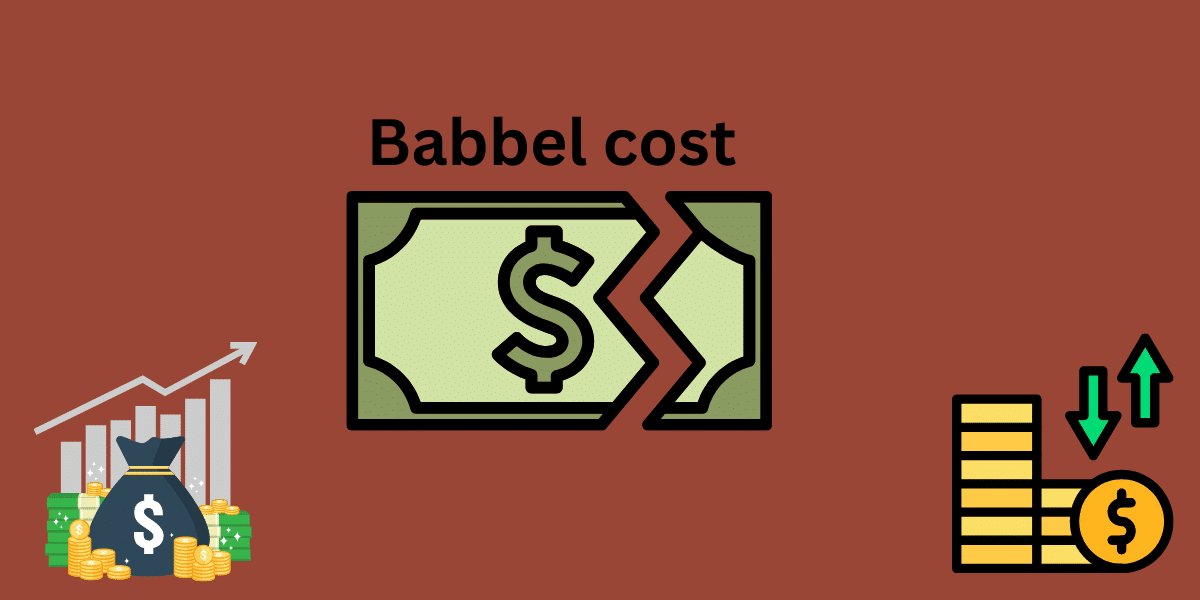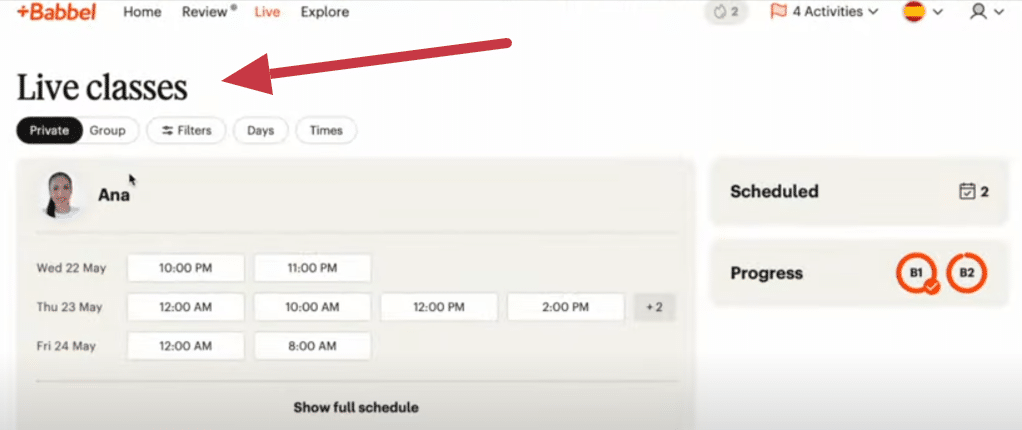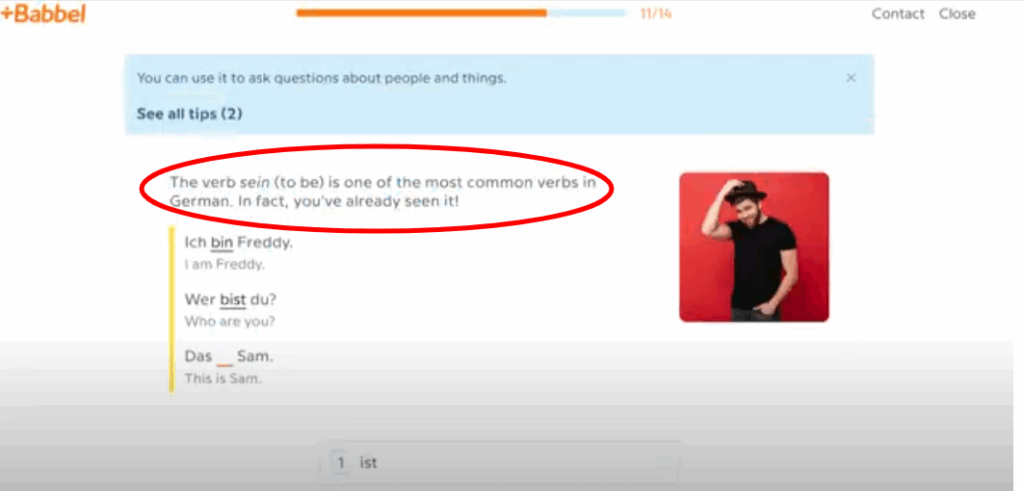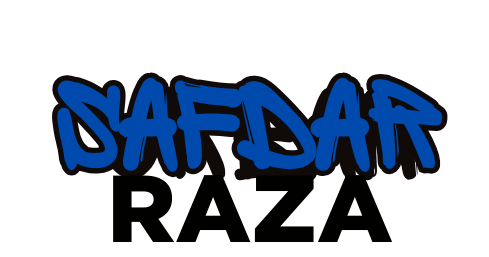
Learning a new language is easier than ever with the rise of language learning apps like Babbel! But how much does Babbel cost? In this guide, I’ll cut through the confusion and give you the exact Babbel pricing for all Babbel subscription plans in 2025.
With over 10 million subscribers worldwide, Babbel has become a go-to language learning platform.
If you’re wondering how it compares to other options, check out my comprehensive Babbel review to see how it performs in real-world testing. Let’s see if it fits your budget and goals
Babbel’s Current Subscription Plans (2025)
I’ve tested all of Babbel’s plans and here’s what you need to know in 2025:
The month to month plan $14.99 per month for a single language. No commitment, but most expensive option.
The 6-month paid subscription runs $9.99 monthly (billed as $59.94 once). This helps you save money on Babbel by about 33% compared to the monthly cost.
The 12-month plan is the best value at $7.99 per month ($95.88 billed annually)—almost half the monthly price! It sometimes includes access to bonus features like live online classes.
For serious language-learning enthusiasts, the Babbel lifetime subscription costs between $249 and $299 as a one-time payment. This includes access to all 14 languages on Babbel. It’s worth it if you’ll study for 2+ years or want multiple languages.
How Much Does Babbel Live Cost?
After using the app for a while, I tried Babbel Live, and wow—it’s a whole different experience. While the standard Babbel app focuses on self-study lessons, Babbel Live is different because it connects you with actual teachers in real-time video classes.

Babbel Live starts at $99 per month for their basic package, which includes 4 classes per month.
If you need more instruction, you can upgrade to 8 classes per month for $169 or their unlimited package at $249 monthly.
These subscription prices might vary slightly depending on promotions and discount offers.
The per-class pricing breaks down to about $25-30 per class on the basic plan, and gets cheaper with the more expensive packages.
When I calculated it, the unlimited plan makes sense if you’ll take more than 10 classes each month.
Group classes typically have 3-6 students, which keeps the cost reasonable while still giving you plenty of teacher attention. I found this sweet spot really helpful – not too crowded but still interactive.
For those wanting one-on-one instruction, Babbel also offers private tutoring starting at $55-65 per session. Definitely pricier, but the personalized attention helped me tackle my specific pronunciation issues and grammar challenges
As for cancellations, Babbel Live requires you to cancel classes at least 24 hours in advance to avoid losing the class credit. Their subscription can be canceled anytime, but refunds are only processed within the first 7 days of purchasing a new plan.
Compared to other services like italki or Preply,babbel live ranges slightly higher in price per class.
However, the structured curriculum and professional language courses make it worth the extra cost in my experience. Most other platforms charge $15-25 per class but don’t offer the same integrated approach with their app content.
If you’re serious about making progress quickly, the combination of app-based learning options plus live online classes is hard to beat, even at the premium price point.
Comparing Babbel’s Cost to Competitor Platforms
I’ve tried pretty much every language app out there, and let me tell you – comparing these prices can be confusing! Here’s how Babbel stacks up against the competition in 2025.
Babbel subscription vs Duolingo Plus is probably the comparison most people make first. Babbel’s monthly plan runs $14.99, while Duolingo Plus costs $12.99 monthly.
The yearly plans show a bigger difference though – Babbel’s annual plan is about $7.99/month ($95.88 total), while Duolingo charges $6.99/month ($83.88 annually). Duolingo’s cheaper, but Babbel’s content is more in depth and structured for actual conversational words and phrases.
Compared to Rosetta Stone, Babbel is actually the budget option! Rosetta Stone charges around $11.99/month for its annual plan ($143.88) or $179 for a lifetime subscription to one language.
Babbel’s lifetime plan at $249-$299 covers ALL languages, making it a better deal if you want to learn multiple languages.
When you compare to traditional options, the value becomes clear. In-person language classes typically cost $25-50 PER HOUR!
A full semester course might run $300-800, depending on where you live. Private tutors charge $40-60 hourly on average. Suddenly Babbel’s $95 annual fee looks like a steal!
Against free resources like YouTube and language exchange apps, obviously Babbel cost money. But the structure and progression saved me countless hours of trying to piece together a learning plan. My time is worth something too!
For my money, Babbel hits the sweet spot of high-quality lessons at a reasonable price. It’s not the cheapest option, but the structured approach and quality content make it worth the few extra bucks compared to budget options.
Is Babbel Worth the Investment?
Look, I was super skeptical about paying for a language learning app when there are free options out there. But after trying Babbel for over a year now, I can honestly say it’s been worth every penny.

When you break down the cost, you’re looking at about $8/month on the annual plan – basically the price of two fancy coffees.
For that price, you get carefully structured language courses that actually build on each other in a way that makes sense. I wasted MONTHS jumping between free YouTube videos before realizing I wasn’t making real progress.
The return on investment really depends on what you’re looking for. If you just want to learn vacation words and phrases, the 3-month plan will get you there for less than $40 total.
But if you’re aiming for actual conversation skills for work or travel, the annual Babbel subscription makes way more sense – and you’ll reach a solid intermediate level in about 6-8 months with regular practice.
What made the biggest difference for me was the speech recognition feature available in every course . It forced me to actually SPEAK the language, not just read it.
Within three months of consistent practice (about 15 minutes daily), I was able to have basic conversations during my trip to Mexico. My friend spent years with free apps and still can’t order food confidently!
Here’s the honest truth – language learning is HARD work, no matter what tool you use. But having a structured system that builds logically is crucial, and that’s what you’re paying for with Babbel. I’ve tried going the free route, and I just ended up confused and discouraged.
If you’re on the fence, start with their 3-month plan to test it out. I bet you’ll be surprised by how much progress you make compared to free options.
The confidence I’ve gained from actually being able to communicate in Spanish has been absolutely priceless for both travel and my career. Trust me, it’s an investment in yourself that actually pays off.
Conclusion
Navigating Babbel’s pricing structure doesn’t have to be overwhelming! As we’ve explored, Babbel offers several subscription prices ranging from monthly plans to the more cost-effective annual subscription, with prices varying based on your commitment length.
Remember, the most valuable language -learning tool is ultimately the one you’ll use consistently—if Babbel’s approach resonates with you, the investment could be the key to unlocking your multilingual potential!
